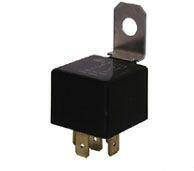
Boosting your car when the battery is dead is something every driver should know how to do. The headache of dealing with a dead battery escalates when you're stranded somewhere and your car does not want to crank up. When faced with a dead battery, trace the cause of the problem before you continue driving. The most common cause is forgetting to turn off the headlights. In some instances, your alternator may be going out. If you find yourself boosting your car more often, get your car tested to see whether the problem has to do with the alternator or the battery. A "load test" will determine whether your battery is capable of holding a charge.
Attempt to crank the vehicle. If the battery is too low to crank the car, you will hear the starter rotating slowly. The car will make a clicking sound if the battery is too weak to even crank.
Open the hood of the car and locate the battery. In most cars, it will be in a front corner, usually behind the headlight assembly. If the battery is installed elsewhere, such as under the backseat or in a panel, the car will usually have a jumper post under the hood where the battery would be. Look near the fuse panel for a small post. It will be marked positive or negative.
Place the vehicle you are using to jump with in front of the stranded vehicle or to the side. Make sure your jumper cables are long enough to reach from one car to the other.
Locate the red cable and clamp it on the positive post of the stranded car. Clamp the black cable to the negative post located on the opposite end of the battery. For batteries located elsewhere in the car, there will be a negative post near the positive post. You can also clamp the negative post to the metal part of the frame, making a ground to complete the circuit.
Place the jumper cables in the correct spot on the charging vehicle. Be sure to put red on positive and black on negative. There will be indicators telling you which is which. Red will have a symbol that looks like a "+". The negative will be a minus symbol.
Make sure the good vehicle is running. Accelerate the engine a little to help charge the battery.
Attempt to crank the "downed" vehicle. The car may not react right away. If the car does not start, let the car sit for at least five minutes before it will take a charge from the other vehicle. If the car will not crank, it may have other problems in the electrical system.
Let the vehicle run for 10 to 15 minutes to allow the battery to charge fully. Disconnect the cables in reverse order.
Attach the positive clamp to the positive post. Make sure it has the positive symbol on it or that there is a red cap attached to it.
Place the negative clamp to the negative post under the hood. The negative symbol will be in front of it. If not, there will be a black cap attached to it.
Ensure the booster box is powered on and has a full charge. A light will indicate power. Most boxes come with a power meter as well.
Attempt to crank the vehicle. The vehicle should start.
Allow the vehicle to run for 10 to 15 mintues to charge the battery to a full charge.